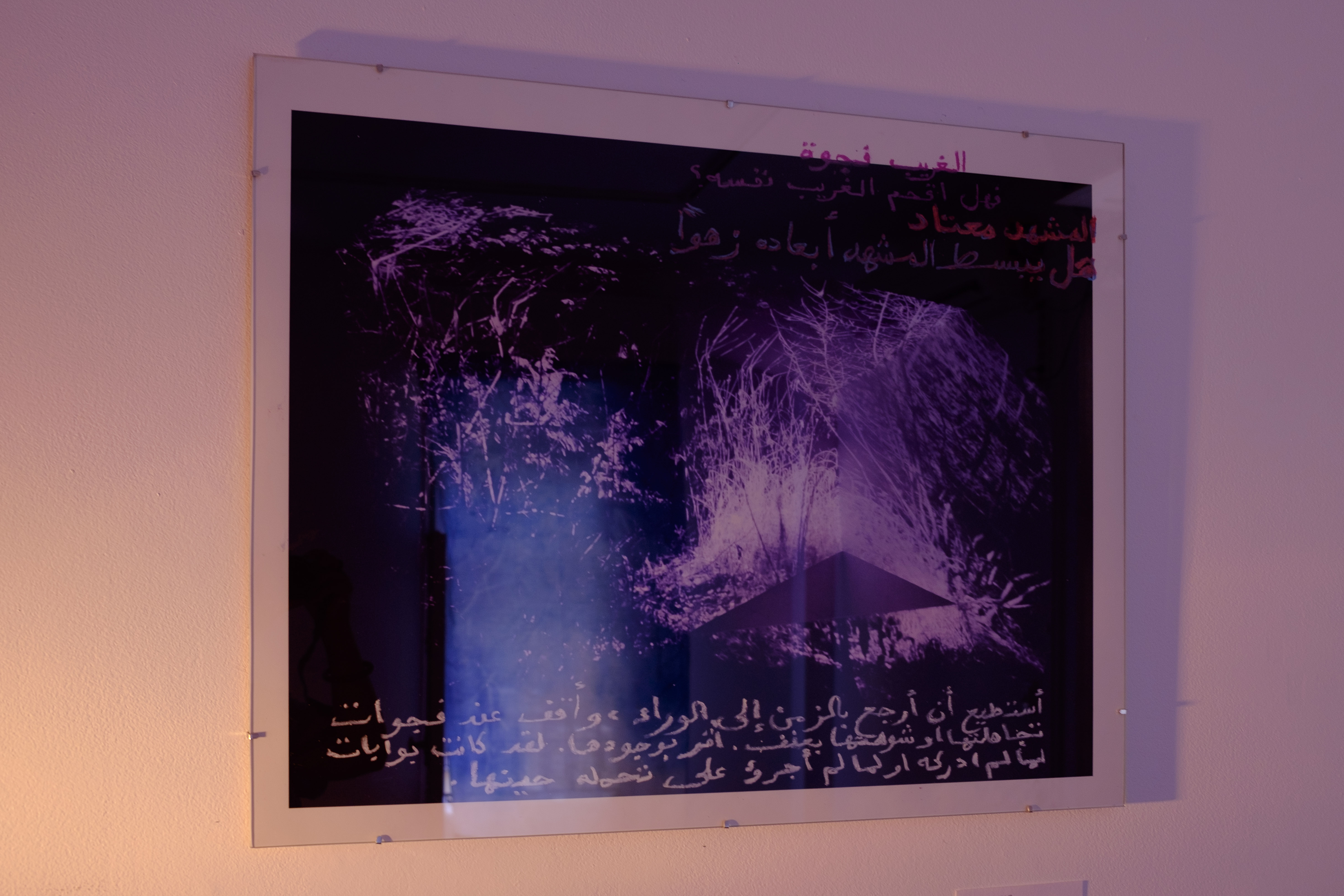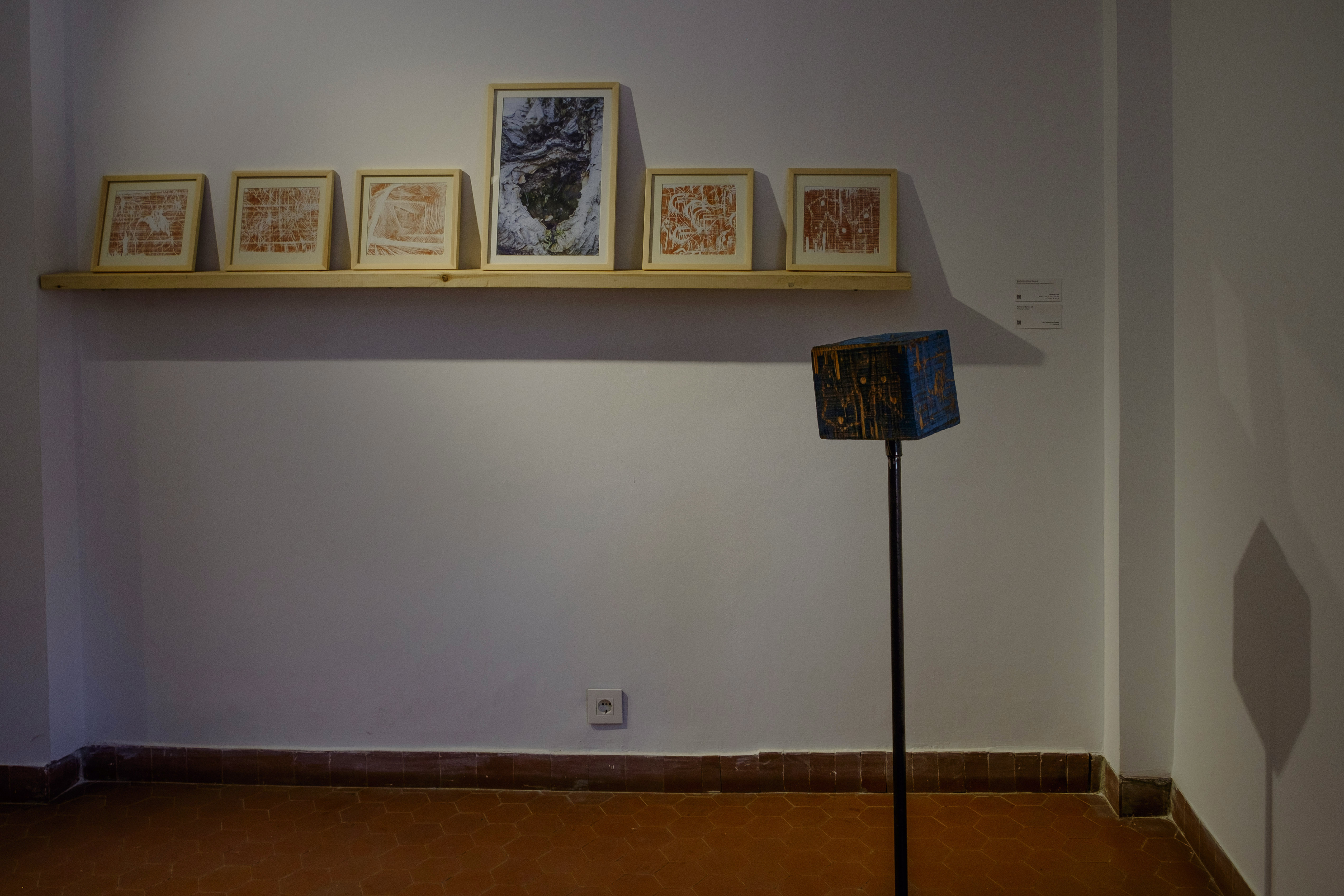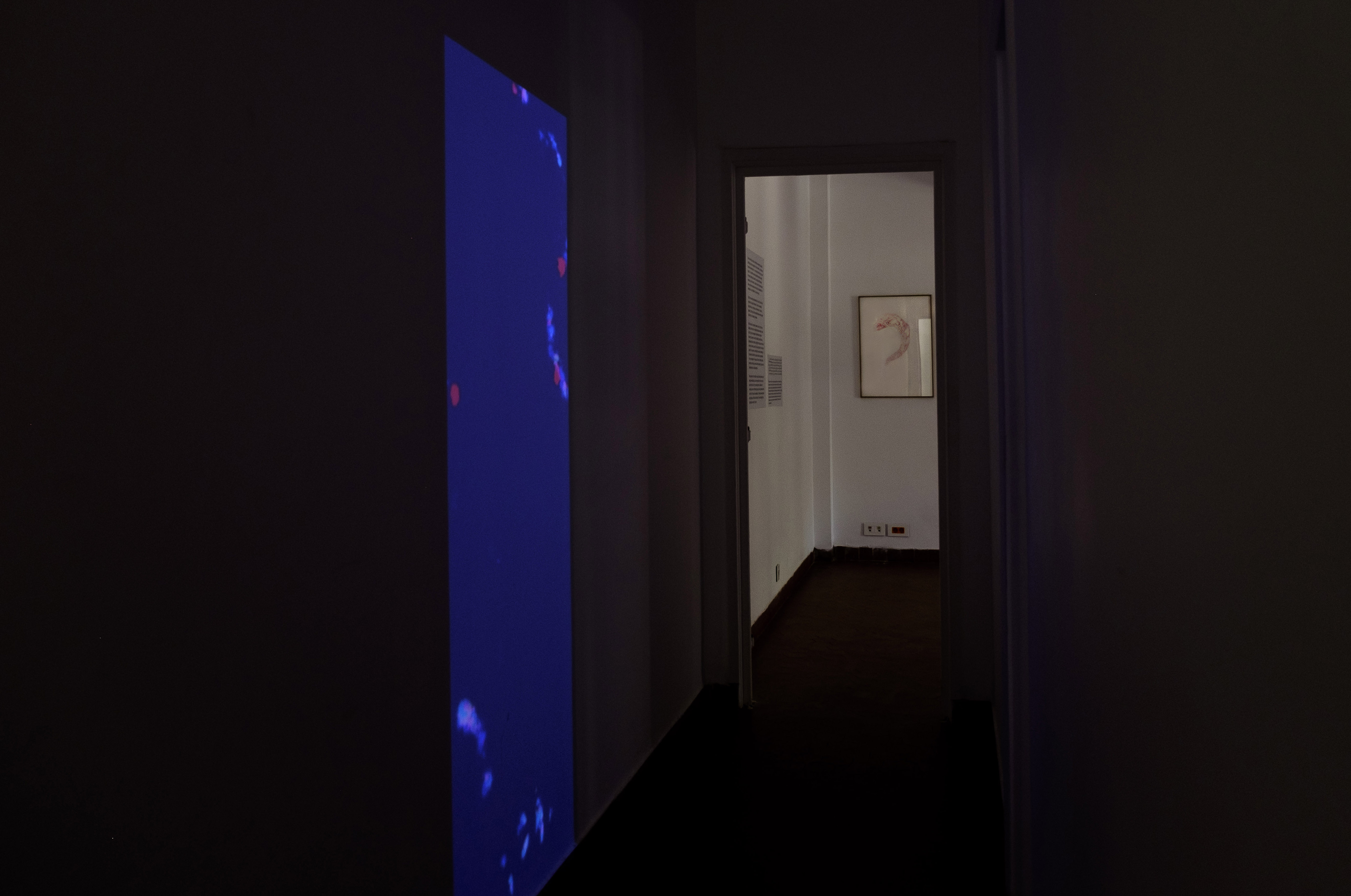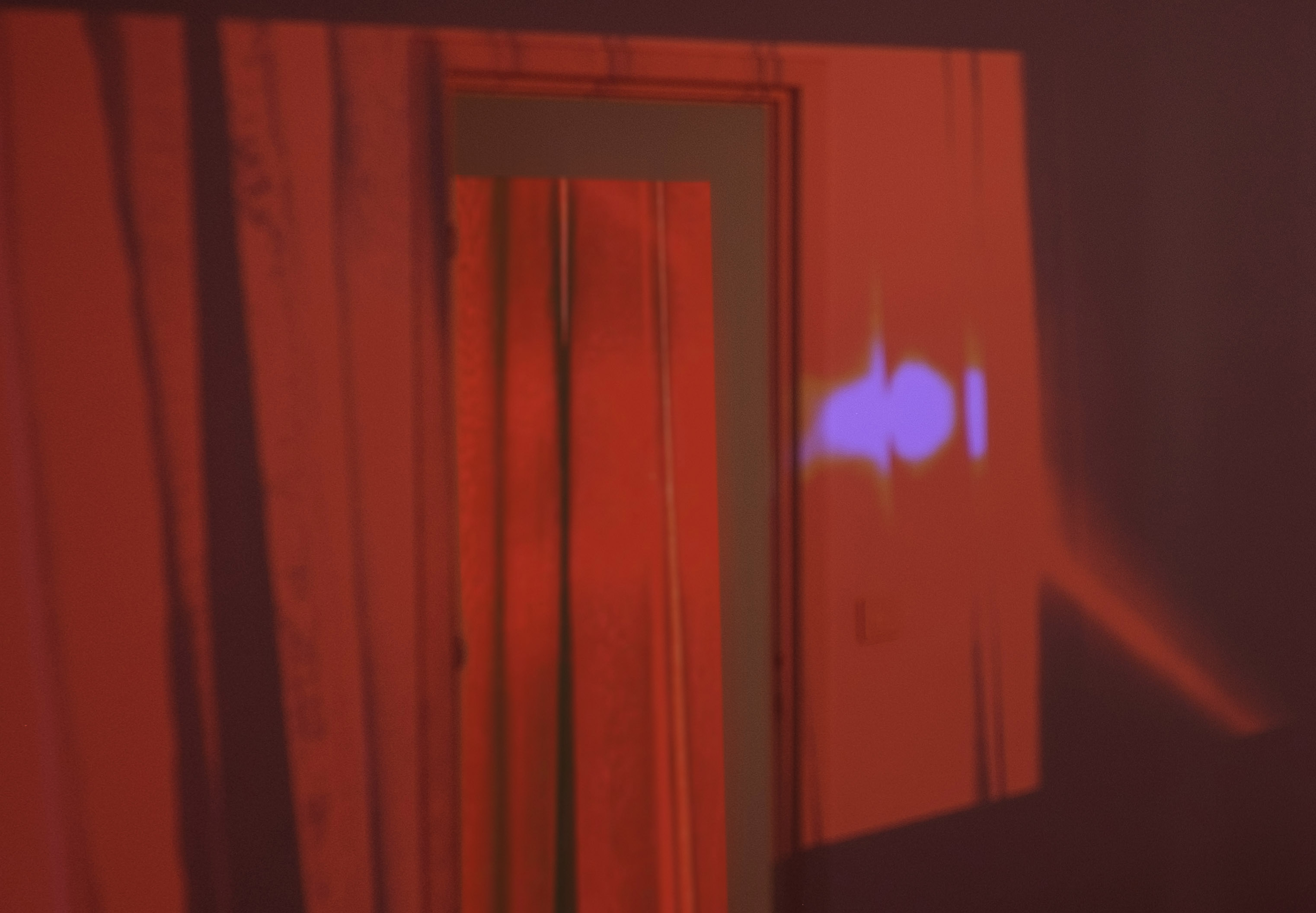Review #8: Engrams
Ahmed Refaat
“Engrams of a Lunar Calendar” is a solo show featuring the work of rana elnemr, where she exhibits the different orientations and spaces her practice took her to. It runs from February 16 to April 30, 2023 at Gallery TakhshĪna², Goethe-Institut Kairo.
“Doors open and close, reflect and are reflected, concealed and emerged, inked and etched. Their movement captures a long, ephemeral moment. It is a moment of wound, pain and fear that evokes all who have been preoccupied with the meaning of this very moment.”
Crossing doors is not always a simple matter. Language may reflect our distrust of doors; we may walk thousands of steps, but one step over a doorstep is called a crossing. We pass through doors into other spaces, which may be spatial, emotional, spiritual and sometimes temporal. Some doors are designed to raise those possibilities that lie within us, possibilities invested in many cinematic scenes charged with anticipation, which include doors about to open or others shut forever. “Engrams of a Lunar Calendar”, the solo exhibition by artist Rana El Nemr, frames this equivocal relationship with doors and crossings; where real and metaphorical doors are not taken lightly, but rather assessed with contemplation and fear.
Red light
The frame of the open door is reflected on the narrow hall by the red light streaming outside. The light hits me before I enter the room, and as the light recedes from the doorway, Fisch is revealed; an installation composed of a video and a photo book. During the artist’s residency in Germany, and in a red-walled studio, Rana got acquainted with the biography of the late Rupprecht Geiger. The German artist who went against his will to the ranks of the fighting on the German-Russian front, where he wrote his diaries, and it is said that he taught himself drawing during that period. From this brief biography and the evocation of the red on the studio wall, Rana weaves the story of Fisch, the creature born from the red wall. In her story, the seed of red that covered the wall of his studio was laying dormant in his notebook that he kept during the war days, and from there it was reborn on the wall. From the violence that had been deposited over the years, Fisch came to give the hidden form a physical existence, chronicled by photographs living between the two sides of a book.
Animals tend to carry many roles in the history of tales; symbolism and the referral to what is unaccounted for or what has not yet found its way to formulation despite its material and tangible existence1. Rana began her artistic practice as a photographer, and through her images, she searched for the exceptional in the ordinary and the everyday, highlighting the contradictions carried by a reality that claims fluidity and consistency, or places and moments that open a new horizon for interpretation. As for her current practice, she uses photography as a tool through which she seeks to "pass through parallel dimensions and times." We may be able to trace this thread in In and out of Connection #5. It is not just a picture in a frame, but includes incomplete texts with some drawings as well. Despite the solidity and seriousness that the thick wooden frame and glass add, it works as a spell connected with another dimension lurking at the moment in which we contemplate the work.In and out of Connection #5 is the fifth edition of a project that has been in the making since 2014, and comprises “texts and images that reflect on their printed or copied material and their very existence.”

Engrams of a Lunar Calendar, photo:
Ali Zaraay
Firewood stocked with violence
I step out of the red room, watching my shadow on the hallway, and head to the last room, where most of the exhibition's work is shown. The wall to the left of the door displays the exhibition’s text, and a vinyl-printed wooden plank is placed against the wall on the other side of the room. We are still in Germany during World War II, where the surrealist painter and engraver Edgar Ende gifted his son, on his tenth birthday, a set of drawings for his wooden cabinet. The drawings have a dual character, depicting scenes of violent incidents of people against a backdrop of places of outstanding natural beauty. These drawings now stand witness to the occurrence of a catastrophe in a quiet place, and its being changed. Did the artist want to satisfy children's appetite for danger, or was it a distraction from a bigger crisis taking place in the country in the meantime, and the ugliness that exceeds natural disasters? Here the door stands as another witness to the sedimentation of violence around us, whether we do it consciously or not.
Two different modes of growth and survival meet in the firesticks library, the video shown in the same room; a designed garden and a wild jungle. It follows a social project for a public library on a piece of land whose owner decided to cultivate one part and leave the other for nature to recover. This little wild forest embraces the open library. We may think that the library chose to stow away in the woods, but the video suggests that there are kinds of experiences and cognitions the library can learn from the little forest. Here too, it is interesting to contemplate the act of reading itself in the video, and how texts can sometimes generate doorways.









The most interesting object in the room is a wooden cube carved in seemingly intuitive and random inscriptions. Reminiscent of the scratches of a school desk, the inscriptions evoke a sense of familiarity and disturbance at the same time. The cube stands on a metal pole and base and is therefore rotatable, inviting you to touch and move it. “The firewood has an organic and material familiarity with the knowledge of moving, organizing and networking, whether through its branches as tree branches or through networks supporting its extended roots in the ground.” Quadrantids Meteor Showers proposes that we can envision wood and trees as a structure for thinking, that we not only see but through which we see things, like “…an established network but lurking in the background, carrying the facts and events taking place above it.” This matches the impression of the cube's different faces on paper.
The accompanying text for the piece uses photographic concepts such as "positive" in reference to the engraved cube and "negative" in reference to the printed images hanging alongside it. Perhaps, it is important to note here that these images did not come from the photosensitivity of the paper and the acidification process, but rather as a result of direct contact. There is no information in this image, but that does not necessarily mean that it does not bear traces of knowledge of a different kind. The positive description of the cube is read as a sign of collective action based on practice and engagement with physical reality. The cube does not hang from above or from a collective utopia of dreams, but is connected and directly based on the ground through its only invisible face. This practice in connection with its surroundings is the path to endless possibilities, some of which we see in the pictures printed and attached to the side of the cube.
The cube touches the paper to imprint the engraved lines on it. Those prints do not represent anything in particular except that this contact has changed it forever, it has become a negative of a one of the sides of the wood. This image produced by practice and action is capable of communicating and negotiating with the rest of the potential possibilities that action (cube/engraving) yielded. The images stand next to another, offering an endless horizon of possibilities. Like those hanging pictures, memories are imprinted on our brain cells, enagrams do not store memory information, but are imprinted with it so that they themselves become part of the memory in our mind. These engrams are summoned into different configurations at the moment of summoning, leaving an infinite number of possibilities.
“Engrams of a Lunar Calendar” searches, in and out of reality, for ways to learn from the different knowledge systems around us that might lead to ways of resistance and change. The exhibition aims to connect with plants, wood, objects and colors, with a desire to unlock this monotonous reality in which we live to other possibilities. This may require wood engraving, and a new awareness of violence and its connotations, but it is necessary if we wish to prepare for the moment the meteors of memory revisit us, and what we could not formulate before we practice, is embodied.
Footnotes
1 Walter Benjamin on Animals in Kafka's Writings

Ahmed Refaat
is a researcher, curtor, and film programmer. He is interested in the local visual culture and its counterpart in similar contexts. He worked as part of the curatorial team of Contemporary Image Center (CiC) until December 2022. Refaat lives in Cairo and writes art criticism for publications and online platforms..